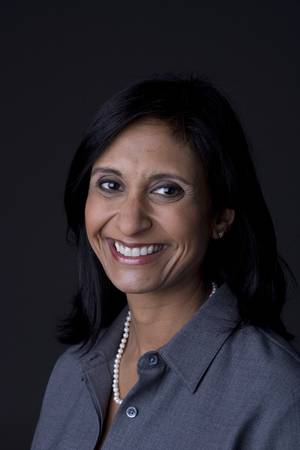Among breast cancer patients, women who worry the most that localized cancer in one breast will spread to the other breast are twice as likely to choose a prophylactic double mastectomy – even though most of them have no clinical indication for the procedure, a study of 1,446 patients showed.
Approximately 80% of the 107 women in the study who chose prophylactic double mastectomy had a very low risk for contralateral disease, Sarah T. Hawley, Ph.D., said in a press conference sponsored by the American Society of Clinical Oncology (ASCO).
She is slated to present the results at a symposium on quality care sponsored by the American Society of Clinical Oncology, taking place Nov. 30 to Dec. 1 in San Diego.
Many women undergo unnecessary surgery out of ungrounded fear that cancer in one breast will lead to cancer in the other, said Dr. Hawley of the division of general medicine at the University of Michigan, Ann Arbor.
Women’s worry about cancer spreading from one breast to the other "really shouldn’t be a reason to get that procedure," she said.
Contralateral prophylactic mastectomy can be considered if a patient is positive for BRCA1 or BRCA2 mutations or has a family history of breast or ovarian cancer in two or more first-degree relatives, according to Society of Surgical Oncology guidelines.
"Despite the small number of women who meet these criteria, rates of contralateral prophylactic mastectomy have been increasing in recent years," Dr. Hawley noted.
Those traditional indications still were powerful drivers in the study – a positive genetic test increased the odds of contralateral prophylactic mastectomy 10-fold, and a family history increased the odds 5-fold.
The doubling in odds of contralateral prophylactic mastectomy in women with a high level of worry (compared with low worry level) is notable because the prophylactic surgery has not been known to reduce the risk of recurrence when those indications are not present, as was the case with the majority of women who chose the procedure in the study.
Among women who chose contralateral prophylactic mastectomy, 90% reported high levels of worry, compared with 80% of the 564 women who underwent single-breast mastectomy, a statistically significant difference, Dr. Hawley reported.
She and her associates studied 1,446 newly diagnosed breast cancer patients who completed two surveys 4 years apart, had not had a recurrence during that time, and had complete data on genetic testing and family history. Contralateral prophylactic mastectomy was considered by 35% of the whole cohort and chosen by 7%. Among women who underwent mastectomy of the cancerous breast, 53% considered contralateral prophylactic mastectomy and 19% underwent the procedure.
When women were considering any mastectomy vs. breast conservation surgery, family history and genetic test results did not significantly affect the odds that they would choose any mastectomy, but their level of worry did. High levels of worry significantly increased the odds of mastectomy by 69% in a subanalysis that controlled for the effects of age, race or ethnicity, education, and cancer stage.
A separate subanalysis found that both clinical indications and worry affected the likelihood of contralateral prophylactic mastectomy compared with unilateral mastectomy. The odds of having the prophylactic surgery increased more than 4-fold with a family history of at least two primary relatives with breast cancer, more than 10-fold with a positive genetic test, and more than 2-fold with a high degree of worry in the multivariate analysis, Dr. Hawley said.
Compared with previous studies on why women are getting contralateral prophylactic mastectomy, the current study is larger; is population-based; contains racial and ethnic samples; and includes data on patient attitudes, genetic testing, and type of family history (not just any family history), she said.
Dr. Jyoti D. Patel, moderator of the press conference, said the findings suggest that "we, as physicians, may not be adequately educating our patients about the risk for recurrent disease."
In general, women with localized breast cancer in one breast have less than a 1% chance of developing a new cancer in the unaffected breast and an 8% chance of recurrence in the affected breast or a nearby lymph node. The risk for developing a new cancer in the contralateral breast rises to approximately 10%-15% if the patient has a history of breast or ovarian cancer in two or more primary relatives, with a similar or slightly greater increased risk from a positive genetic mutation, Dr. Patel estimated. Having both clinical risk factors confers a 10- to 20-fold increase in risk.
Unfortunately, many women overestimate their risk of developing breast cancer in the contralateral breast and undergo unnecessary surgery, she commented. This study suggests that physicians re-examine how they communicate with their patients regarding the decision to undergo prophylactic mastectomy.



